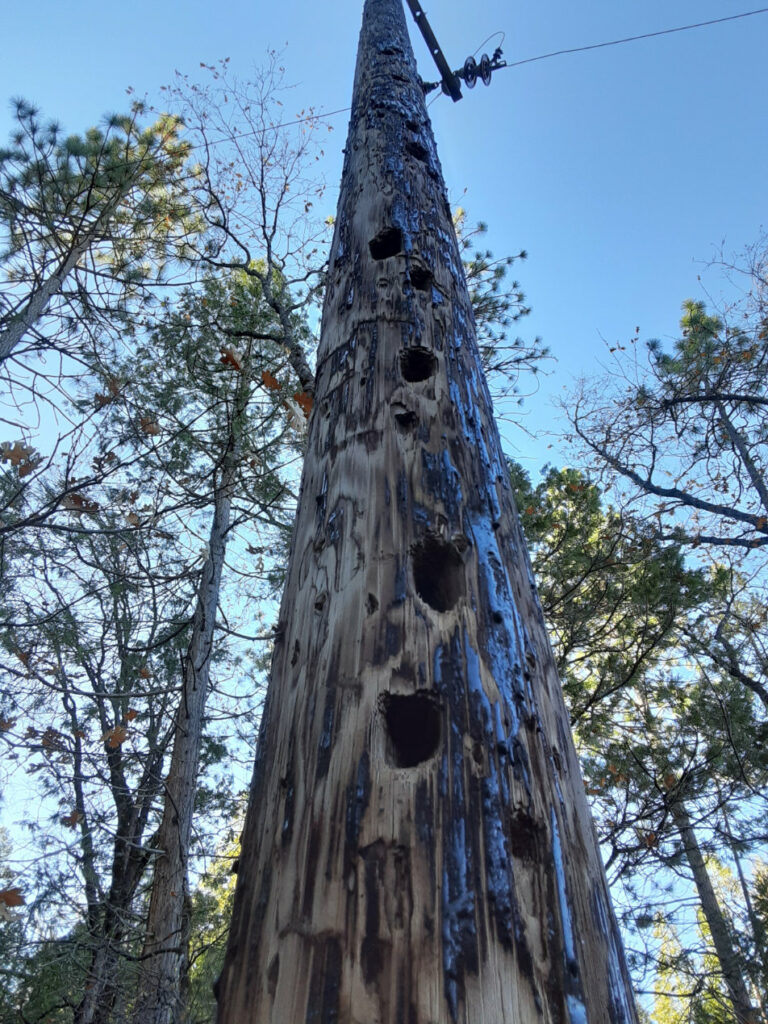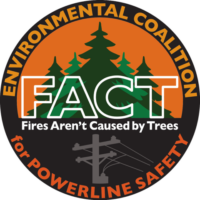Environmental Damage
The Impact of PG&E’s Enhanced Vegetation Management (EVM)
This page offers a close up view for the millions of people who live in urban areas and have not witnessed intensive tree felling by utility companies. It might seem appropriate to some to fell all the trees anywhere near any powerline. However doing this would not stop powerline caused wildfires.
PG&E has been aggressive in their effort to remove trees near their powerlines in mapped “High Wildfire Threat Districts.” This specific map was the result of a CPUC Proceeding that defined areas at high risk of powerline ignited fires. In 2018 this focus on tree removal entered a new phase with the California Public Utilities Commission (CPUC) Wildfire Mitigation Plan Proceeding.
Each company writes their own plan for how to reduce electric power circuit ignited wildfires. The difference between Southern California Edison’s (SCE) plan and that of Pacific Gas and Electric (PG&E) is revealing. In 2019 SCE has focused upon installing insulated power cables. PG&E focused on “vegetation management.” These plans are large complex documents with many components. PG&E writes about what is loosely called “system hardening”, but the company spends huge amounts of money cutting back and entirely removing trees. In 2025 PG&E placed a full-page into the Santa Rosa Press Democrat newspaper asserting the following: “We spend 1.8 billion dollars a year to cut back trees around powerlines, only to have them grow back, forcing us to do it all over again.”
We can explain with certainty that millions of California’s trees have now been reduced to stumps by contractors to PG&E. This is not an exaggeration. We rely upon PG&E’s assertions for the term “millions”. Often these are heritage specimens and old growth trees that began growing hundreds of years ago, and that were growing in homeowner front yards.
In California forestlands trees can be 200 feet tall and taller. The notion that a tree is a risk that requires it to be destroyed simply because it might someday fall in the direction of a powerline became involved with what PG&E calls “strike distance.” PG&E also uses the term “over strike” which seems to apply to trees or branches above their powerlines. These concepts have led to large scale destruction and many disputes with homeowners. It is misguided to conclude that the hazard involved is trees and not the inherent capacity for fire ignition from outdated and uninsulated electrical circuits. The majority of vegetation conflicts with powerlines involve high wind events. In circumstances of high winds, debris can be thrown long distances. A small green branch torn from a tree that lands onto two uninsulated powerlines causes an electrical fault with bare powerlines. Heritage trees are felled to protect small fragile old wires that should be replaced regardless of any proximity to trees.
It’s very expensive to protect dangerous electrical circuits by felling trees. Any reduction in electrical faults achieved is temporary. The dangerous powerline remains. The deadliest fire so far, the Camp Fire, was ignited by degraded transmission tower equipment. A forest of trees can be destroyed, and this kind of obsolete equipment will continue igniting fires. All that’s needed for electrical equipment to start a fire is sparks of burning metal landing in dry grass.
PG&E has stated its intent to remove millions of trees. The CPUC expressly dismissed the issue of environmental impacts. Homeowners are hounded when they resist the destruction of beloved old trees. In the CZU Lightning Complex fire zone, chain saws were felling trees on homesites before homeowners could get back to their property.
Cities, Counties, a Water District, a CalFire District Office, the CA Coastal Commission and Water Quality Control Board have issued letters of complaint. This includes a formal Adjudicatory Complaint from Santa Cruz County to the CPUC. These complaints address excessive tree felling, the abandonment of felled logs on homesites and damage to streams and water quality. This story is too complex to explain in one webpage. We will illustrate it with photographs.
We have access to the documents mentioned above and we can provide them to you upon request.
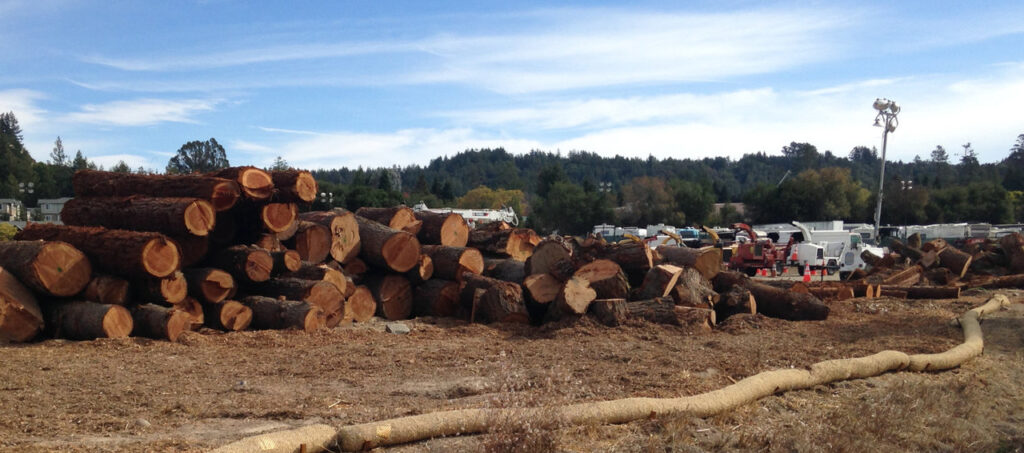
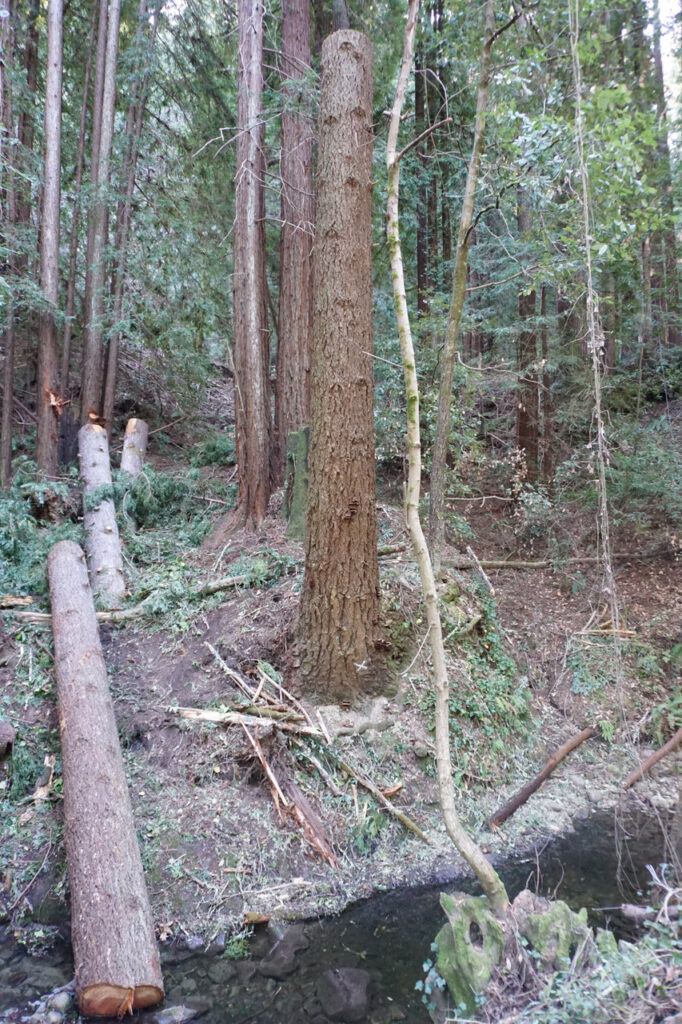
Large Douglas Fir destroyed in the stream-side riparian zone of endangered species.
Tree was healthy and straight. It has no visible structural defects to justify selecting it for destruction. It may have been felled for reasons of “strike distance”, or general proximity to a powerline.
Citizens intervened and stopped further tree felling in this situation.
The standing bole of the tree is marked with a white X.
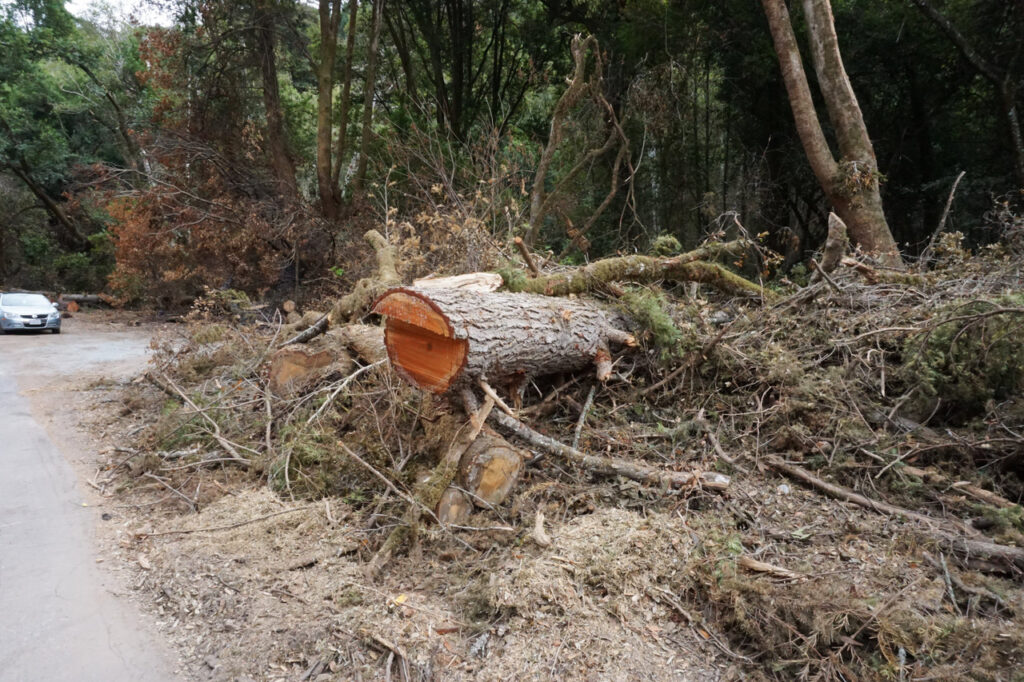
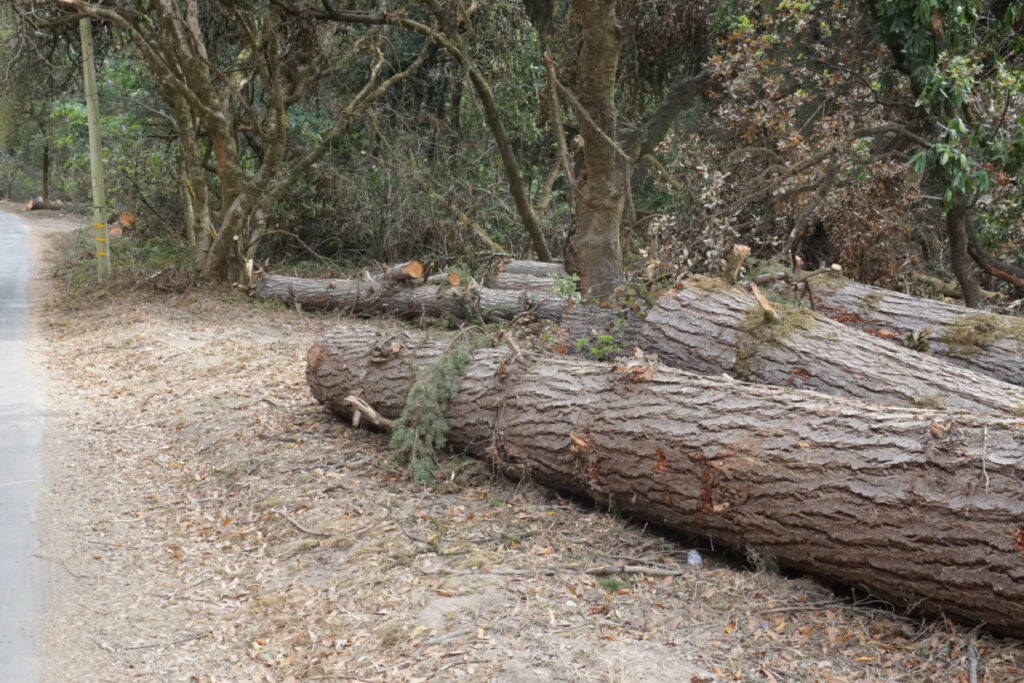
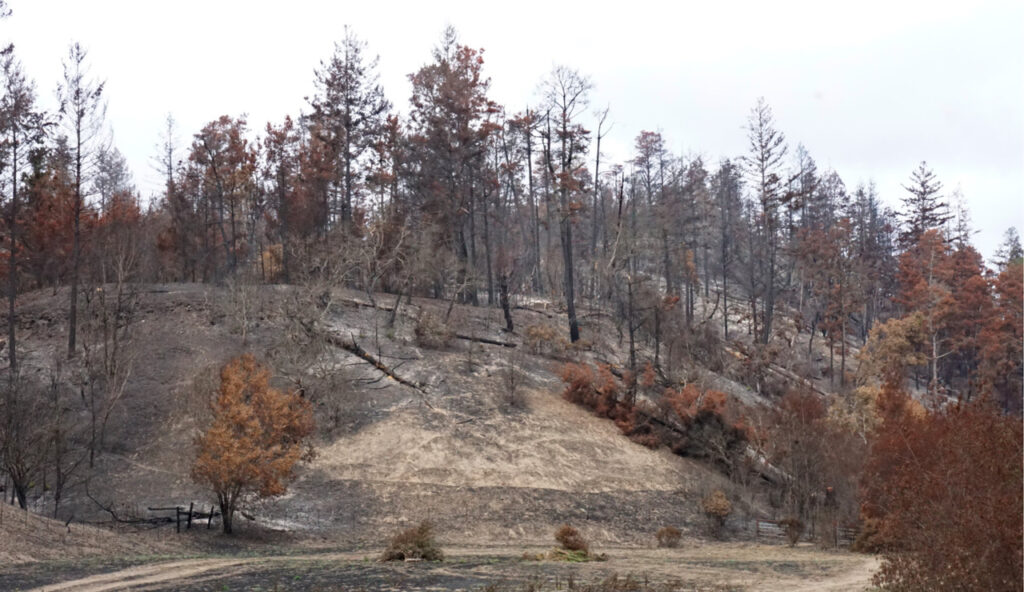
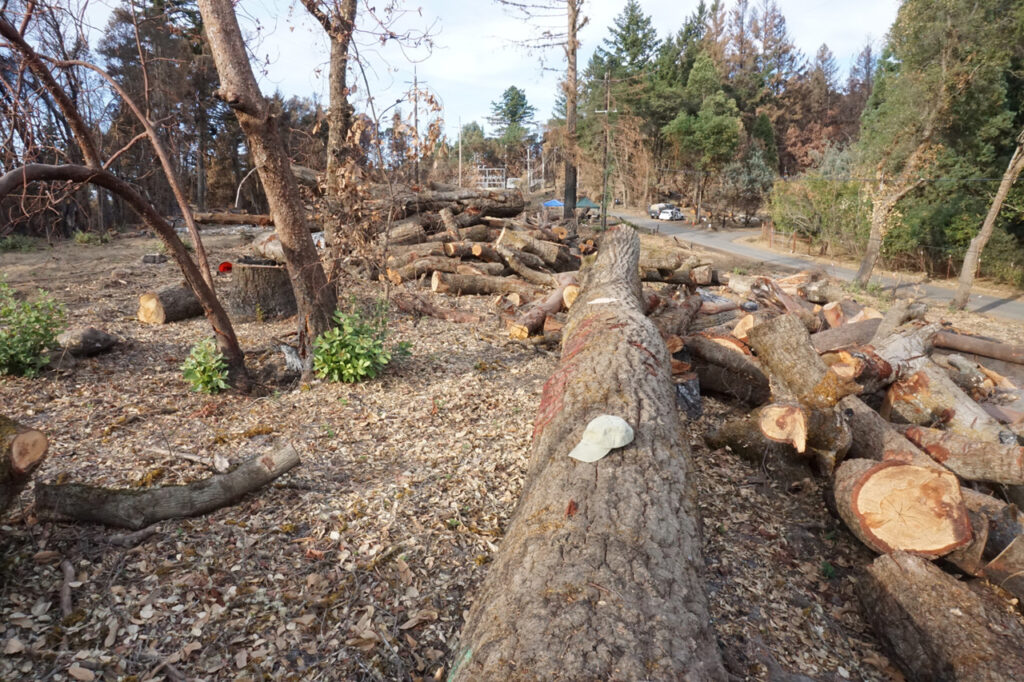
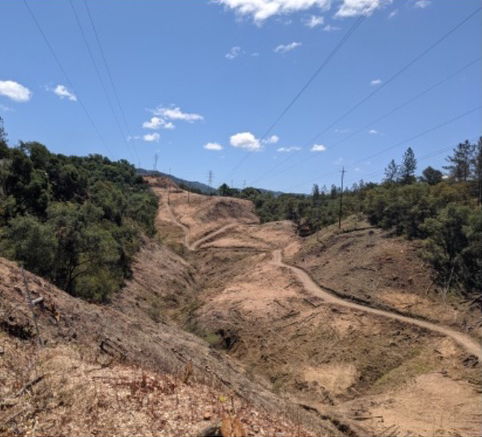
Photo of a stream channel stripped of trees. This is Mendocino County near Redwood Valley. There appear to be transmission circuits high overhead and a distribution circuit on the right side of the image. We can think of no sensible reason to strip this land and it’s likely a violation of CA water pollution law. Perhaps the transmission lines above are expected to shower sparks onto this ground. What risk was addressed here? Dry grass burns.
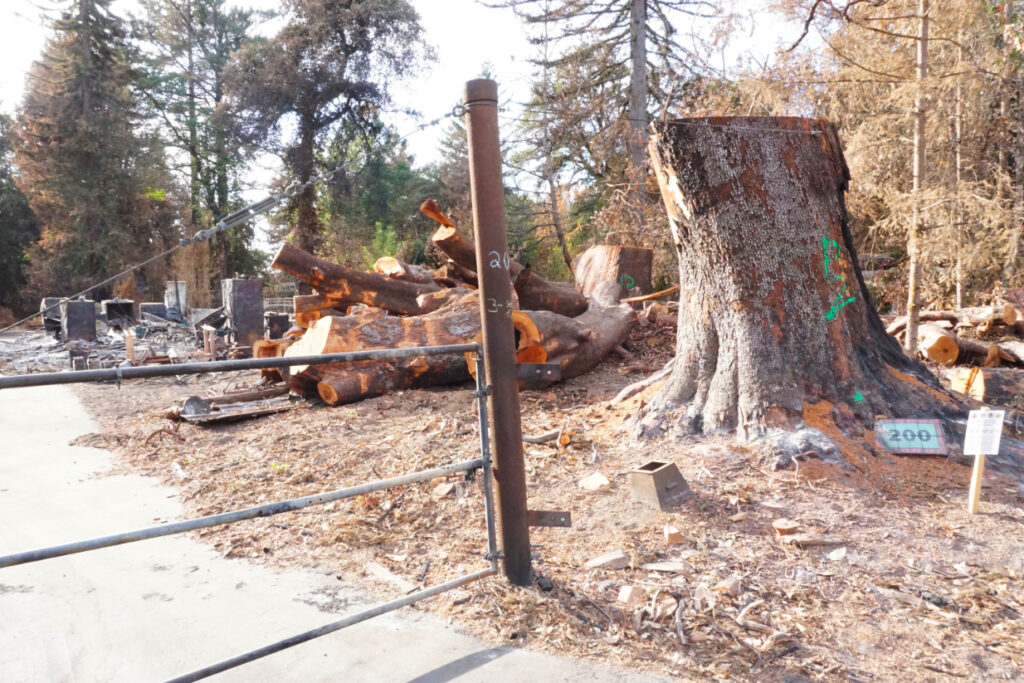
This giant Ponderosa Pine is marked with the X of death. We don’t know what finally happened here. But many trees were destroyed in this neighborhood. This is Calaveras County in the Sierra foothills near the famous Giant Sequoia groves of Calaveras Big Trees State Park.

If this issue remains questionable to you, below is a photo of an old power pole standing not far from Yosemite National Park. This area survived the 2013 Rim Fire. Many big old trees have been felled in the area of this pole over the objections of the landowner who cannot always be present to protect his land from PG&E contractors.
